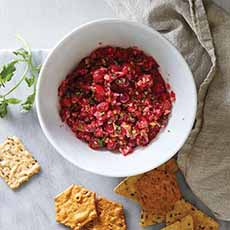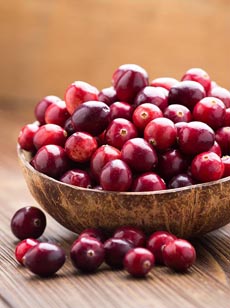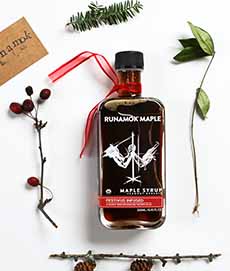|
Milk punch falls in the category of drinks made with milk or cream.
Examples include the Brandy Alexander, Classic Ramos Gin Fizz, Eggnog, Grasshopper, Irish Coffee, Mudslide, Pink Squirrel, Ramos Gin Fizz, White Russian, and many others (hey—another idea for a themed cocktail party: cream-based cocktails).
Milk punch combines brandy or bourbon* with milk, sugar and vanilla extract, typically garnished with grated nutmeg.
FOOD TRIVIA: When cocktails were first being developed and spirits were not as elegant as many are today, sugar was added to cocktails to cover up the [bad] taste of the alcohol, as was milk.
The history of milk punch is below.
COCKTAIL RECIPE: BOURBON MILK PUNCH
Woodford Reserve Bourbon created this Milk Punch recipe (photo #1) using their Kentucky Straight Bourbon Whiskey (photo #2).
It’s a crowd pleaser that’s easy to make.
For the fresh-grated nutmeg garnish, just buy nutmeg “nuts” (they’re not nuts, but seeds that look like nuts)†.
Then, using a Microplane or similar tool at your disposal, freshly grate the garnish over each drink.
We personally use a nutmeg grinder that saves our fingertips, because the “nuts” aren’t easy to hold. It’s an inexpensive must-have if you use a lot of nutmeg.
Ingredients
2 cups cream
2 cups whole milk
1 cup Woodford Reserve Bourbon
¾ cup sifted powdered sugar
½ vanilla bean split lengthwise (substitute 1-1/2 teaspoons vanilla extract)
Fresh grated nutmeg
Preparation
1. PLACE a metal bowl over an ice bath. Whisk together the cream, milk, bourbon and sugar, until nice and frothy.
2. ADD the vanilla bean and pour into a pitcher (we used a lidded plastic container). Place in the freezer for 30 minutes to an hour, stirring occasionally.
3. STRAIN out the vanilla bean through a fine mesh strainer and return to the pitcher for serving. (If you’ve used vanilla extract, skip this step).
4. POUR into glasses and garnish with freshly grated nutmeg.
MILK PUNCH HISTORY
Milk punch was popularized in the 17th century by Aphra Behn, one of the first English women to earn her living by her writing. At the time, all types of punch were served from a punch bowl.
The milk punch of the era was made with cream curdled with lemon juice. Those recipes gave way to milk punches that use(d) fresh milk or cream, like egg nog—which is a milk punch enriched with eggs.
Milk punches—egg nog or other—became holiday and celebratory traditions (for example, Mardi Gras).
In modern-day New Orleans, milk punches vie as brunch drinks with the Bloody Mary, created in 1940 in New York City (Bloody Mary history).
There are as many recipes for milk punch as for anything else, but for Mardi Gras we serve up the recipe from Brennan’s, a favorite New Orleans restaurant since 1946.
For a 17th-century-type recipe, try Benjamin Franklin’s recipe. He used brandy and included lots of lemon juice (which curdled the milk).
This, and other cognac-based milk punches, often use Napoleon brandy, a designation for a brandy or cognac aged at least five years. Feel free to use VSOP; with all the cream and sugar, the nuances of the Napoleon will be covered up.
If you don’t like or don’t have brandy, you can substitute bourbon, rum, whiskey and even tequila.
Despite its name, nutmeg isn’t a nut. It’s really a seed. If you have a nut allergy, you may be able to eat nutmeg without any risk of an allergic reaction. However, if you have a seed allergy, you may need to avoid nutmeg since it’s technically from a seed.
|











